
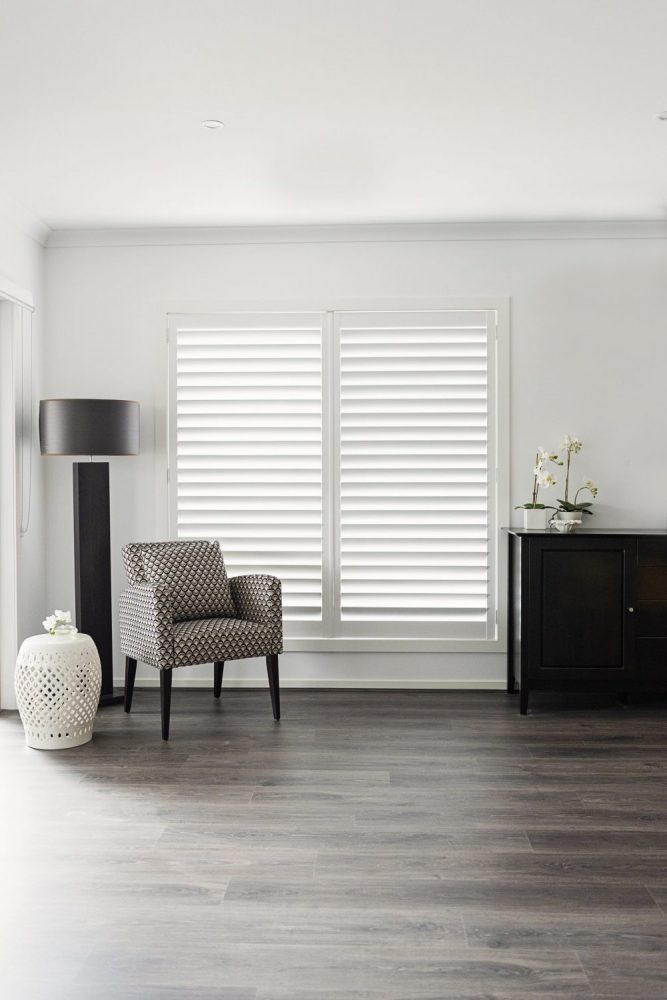
Shutter specialist TWO Australia tracks the evolution of the increasingly sophisticated shutter category, which, buoyed by a range of material and product advances, continues to grow exponentially.
The streamlined nature of shutter design has ensured shutters’ enduring appeal and ongoing commercial value. Renowned German industrial designer Dieter Rams is known for having promoted key principles of good design – including environmental sustainability, aesthetic quality, timelessness, innovation and the inclusion of ‘as little design as possible’ into the products associated with his name. Plantation shutters align with all of these measures. There are no cords, no obtrusive elements nor clutter, just simplicity of function, ease of operation and timeless elegance that integrates with both modern and traditional interiors. As such, the shutter category continues to be a high growth and high demand sector of the Australian and global window treatment market.
However, consumers and retailers today face a wide array of options in the shutter category: solid timber, two-pack painted timber, aluminium, PVC, hybrid combinations, MDF – the varieties on offer are vast. Consumers also have to navigate a wide range of communications on value-added features associated with those products, from ‘thermal insulation’, to ‘lightweight’ to ‘sustainably sourced’. Many of the considerations in purchasing shutters relate to these properties of natural composition and sustainability, because while consumers have instant access to more information than ever before, they are more actively engaged in making choices that align with the way they want to live.
As such the product selections within the category are both continuously evolving and highly competitive, with each vying for market dominance. This is in light of the fact that the natural premium product of timber is getting harder and more expensive to source sustainably. As such there has been a rise in less expensive alternatives such as PVC and other plastic derivatives. But there are many questions surrounding the environmental processes, health implications and suitability of these synthetic alternatives. Other options such as MDF composition are vastly less robust and overall are largely unsuitable for long term consideration for domestic shutter interiors.
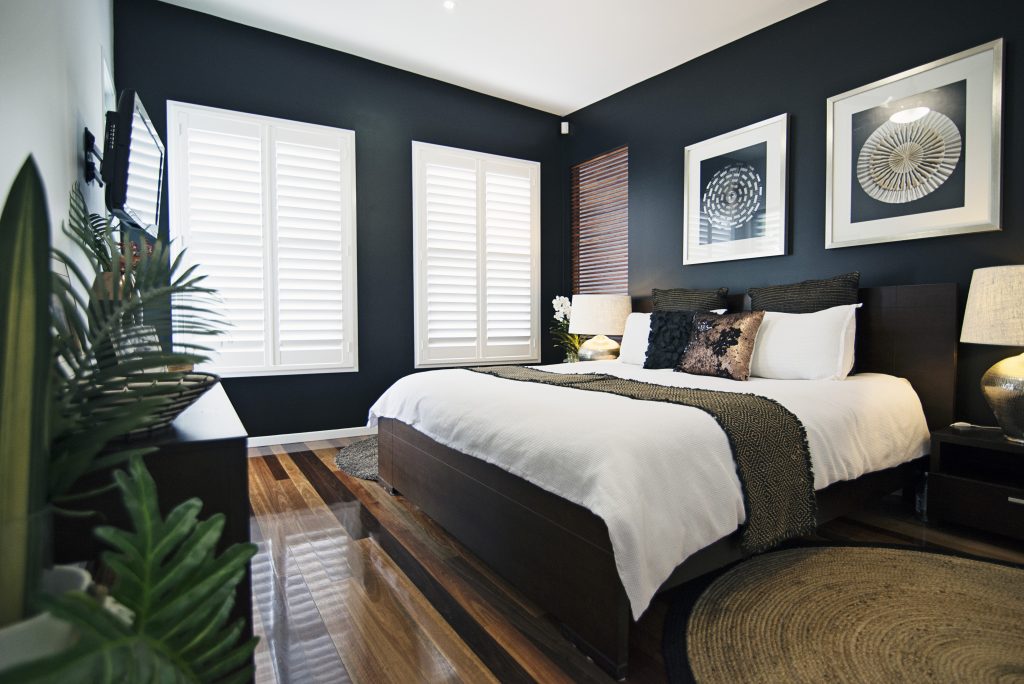
Today we see hybrid products combining different materials finding a middle ground between synthetic and timber. In parallel, another key driver underpinning growth in the internal shutter market is the internal aluminium category. Panels can be made wider with light-weight aluminium, VOC emissions are minimised and the thermal properties of aluminium perform very well for insulation.
In many ways, the shutter market is in an exciting state of transition, with new manufacturing possibilities – particularly in the hybrid and aluminium space – ensuring the continued growth in popularity of internal shutters. This is also exciting for retailers, as it ensures options from entry level to premium within the category to address a wide range of consumer and commercial needs.
Similar evolution has been seen in other mature lifestyle manufacturing categories such as kitchen benchtops. Marble and granite, long the premium choice for domestic kitchens, increasingly face a competitor mix of engineered stone, durable laminates and even stainless steel. Developments in manufacturing have enabled these new products gain market traction, even market dominance. However, success is very much based on the ability to replicate the beauty and intricacy of a natural product.
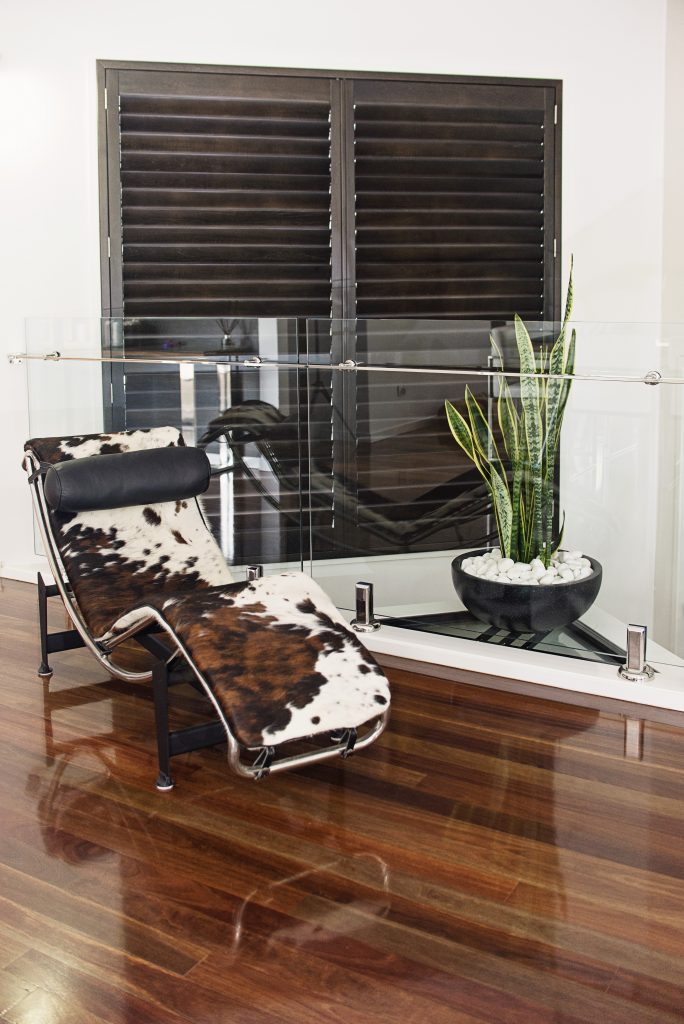
TWO has long had a commitment, not only to the high-quality production of solid Basswood and Poplar shutters, but also to innovative product research and development to engineer new shutters. This has enabled the successful launch of Highprofile Elements, a unique hybrid shutter that takes the traditional plantation shutter to a progressive new level.
In today’s market which requires a complex matrix of sustainability, competitive value, functionality and manufacturing efficiency, Highprofile Elements has struck a chord with retailers and consumers. This well designed shutter incorporates a solid poplar timber frame with PVC blades. It is lightweight, prevents sag and allows for a wider panel expanse than full PVC shutters. Through the clever fusion of natural and engineered elements, it represents a cost-effective shutter solution that doesn’t compromise style or durability.
There is no doubt that shutter hybrids represent the future of shutters. What it also demonstrates is that the future of shutters is very much determined by the experience and R&D investment of long standing manufacturers such as TWO, who are firmly committed to engineering innovation in the shutter market.
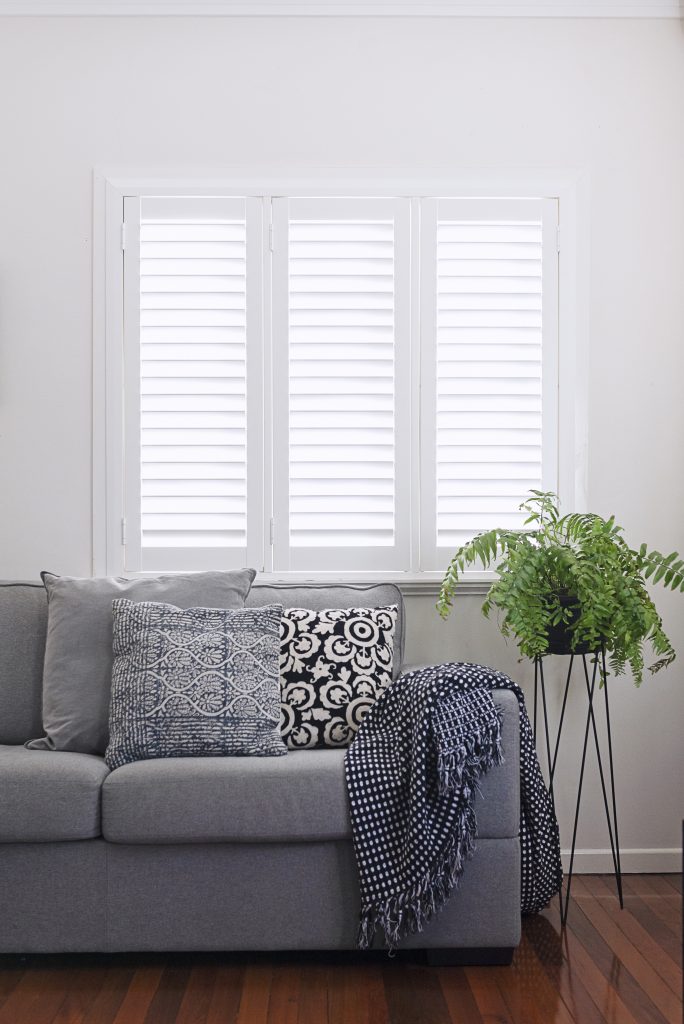
Similarly, just as stainless steel is featured in domestic home inclusions, aluminium is increasingly sought after as an internal material for fixtures and fittings. TWO’s exciting Highprofile Avenir launch garnered much attention in the Australian shutter industry in 2018. Made from aluminium, Highprofile Avenir is the most durable indoor shutter on the market. It offers the widest single panel expanse of any interior shutter, while maximising light and views. Its clean, modern lines and matte powder coat finish ensure that this shutter has all the benefits of a premium shutter but at a lower entry cost for price conscious consumers. Most importantly, there are virtually no VOC emissions, which is crucial for an increasingly environmentally conscious buying public.
Much of the overall growth in the shutter market is coming from these two key innovative shutter options: timber hybrids and aluminium. And TWO’s Highprofile Elements and Highprofile Avenir are the standouts in these respective categories.
In the Australian aluminium category specifically, more fittings and operational options are also rapidly becoming available. Currently for Highprofile Avenir there are modern frame choices, direct hinging to timber reveals and sliding and bi-fold options.
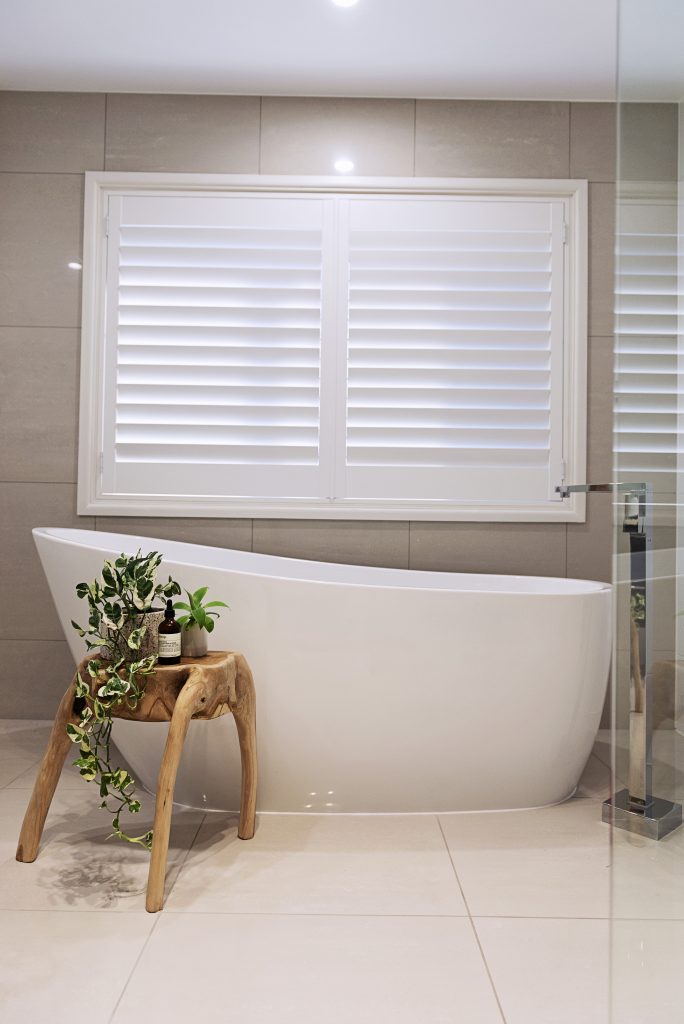
At the premium end in the shutter category, solid timber is still a mainstay in shutter ranges in Australia. When sourced sustainably, solid timber shutters are recyclable, biodegradable and require less energy to be produced than shutters made from other inorganic materials. Hardwoods such as poplar and basswood naturally endure far longer than synthetic counterparts. They are also less likely to collect allergens, which can be trapped in artificial substances. The concern in the industry though, is that as timber species are becoming harder to source sustainably, and at higher cost, some manufacturers are using less and less actual timber. Many ‘timber’ shutter products are in reality a thin veneer of laminated strips on another timber or timber composite. It is very important for consumers and retailers to be aware of this distinct difference. Quite simply, not all timber shutters are created equal.
To be sold as a timber shutter, a shutter should be 100% of the timber species. TWO’s longstanding Highprofile Classic shutters including poplar (painted) shutters and basswood (stained) shutters are 100% solid timber and are manufactured from 100% of the timber species. TWO never uses veneers and the timber is hand selected to ensure even grain appearance.
Yet there will always be a need for an entry level product in a market category. PVC shutter products continue to be a part of the shutter category as a lower cost alternative. There are some concerns with weight and this has largely limited the penetration of PVC shutters in the market. PVC is a heavier material than timber and aluminium, leading to possible problems of sagging blades and the inability to cover a wide expanse. Successful manufacturing requires a joint dialogue with customers and retailers and TWO’s Highprofile Poly product addresses many of these concerns to ensure an appropriate and functional entry level shutter product in Australia. It will be a welcome addition to the price sensitive part of the shutter market.
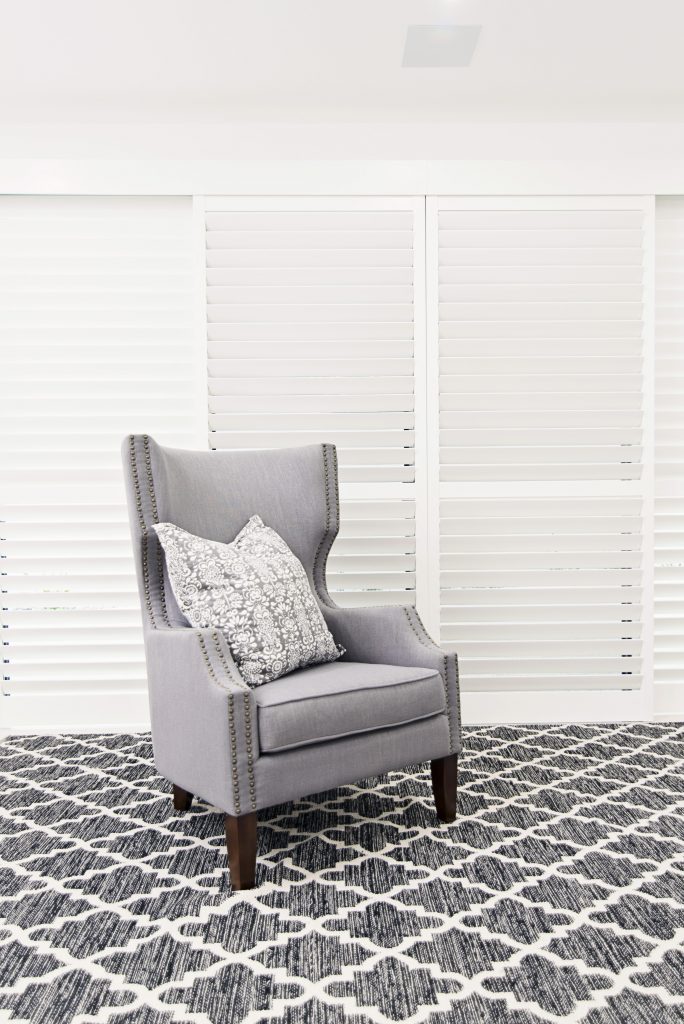
TWO’s Highprofile Poly has two frame options and has a large panel width of 900mm. Coated in two-pack, the feel and finish is quite luxurious and has the added benefit of being able to be accommodated in wet and dry areas. The thermal properties of PVC perform well, giving good insulation and efficiency with heat deflection. One of the key features in current home design and decoration is a seamlessness and consistency between areas. Window treatments flow from one area to the next, whether living, bedroom, bathroom or billiard room. PVC shutters give a lot of flexibility given their durability and ability to withstand both wet and dry environments. As such, they continue to represent a key component in the shutter category product offering.
Overall it is evident that shutters are both coveted and timeless and continue to grow as a category, both internally and externally and in domestic and commercial applications in Australia. The future for shutters continues to be one of rapid growth but also of rapid innovation. The breadth of the materials in composition is expanding quickly and today includes solid timber, hybrid timbers, hybrid polymers combined with timber, full PVC and now aluminium.
That is why depth of manufacturing expertise is more important than ever before, for not only sourcing appropriate materials, but in the application and manufacturing requiring more complex processes. TWO has long had its own in-house R&D program to ensure not only proprietary products are consistently in development but that they are created sustainably and responsibly. TWO’s hybrid shutter, Highprofile Elements, and interior aluminium shutter, Highprofile Avenir, are a clear demonstration of that commitment to innovation. In particular, aluminium is light, recyclable and durable, and it is great to see how quickly this unique shutter is becoming popular in the Australian residential market. It is clear that this shutter product is leading the way and has an exciting path to forge globally.
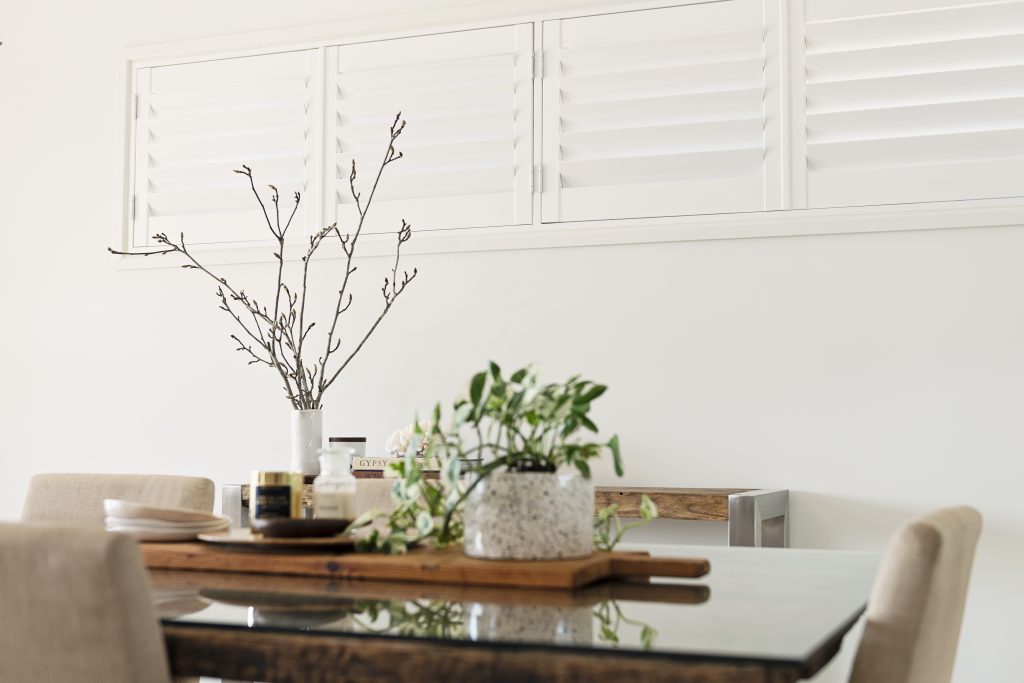
In addition, TWO is an experienced international manufacturer and distributor of a full range of shutter products that unite superior design with utility, to create tangible lifestyle improvements. Meticulous selection of materials, including timber and innovative design resonate through the ranges to do what shutters do best, which is to regulate temperature and airflow, extend living areas, ensure privacy and minimise maintenance.
There is little doubt shutters will long be highly desirable for their appearance. They are the first choice in home window treatments for style and function and the future continues to look bright for shutters of all types.
In many ways, the shutter market is in an exciting state of transition, with new manufacturing possibilities – particularly in the hybrid and aluminium space – ensuring the continued growth in popularity of internal shutters. This is also exciting for retailers, as it ensures options from entry level to premium within the category to address a wide range of consumer and commercial needs.